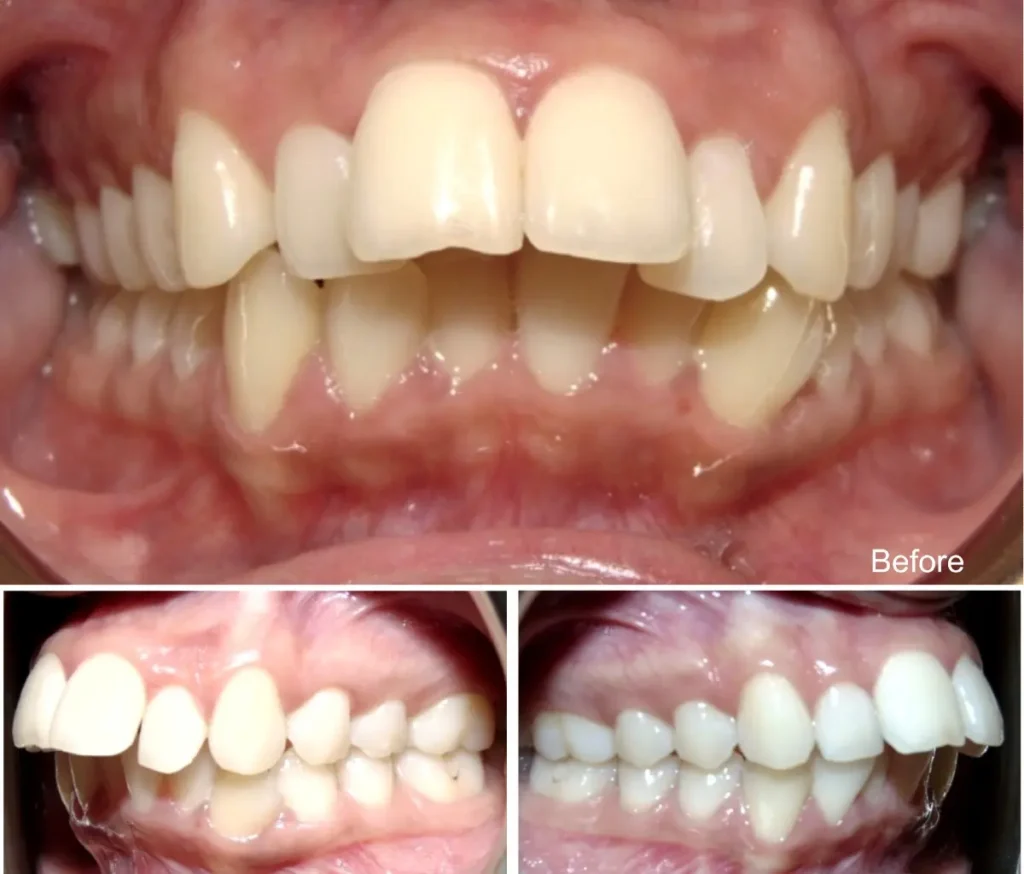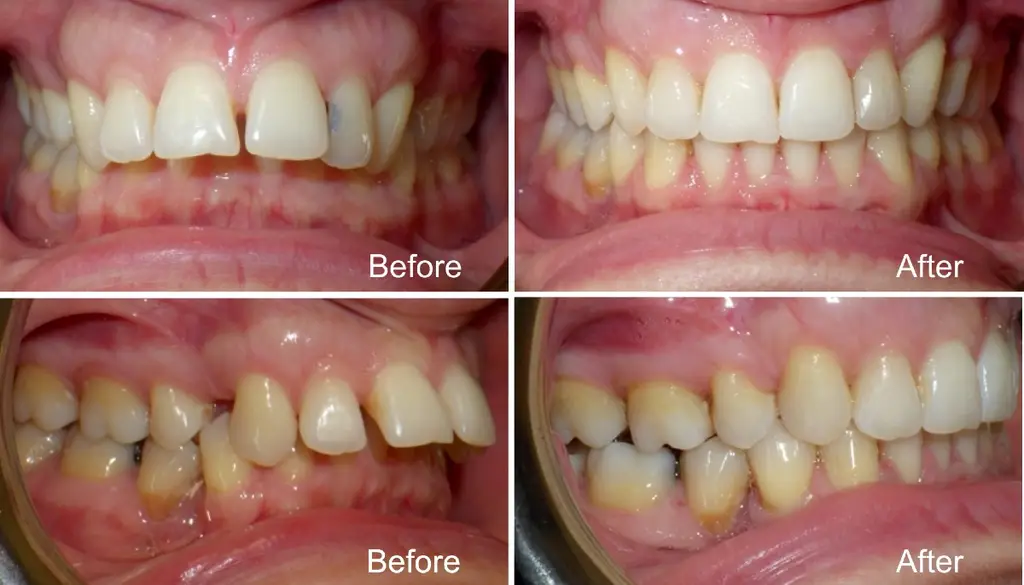Your Overjet Questions Answered: What Is It? How Do I Treat It?
Has anyone ever called you “buck teeth”? If so, you might have an overjet.
If you’re hoping to correct your overjet, you’re in the right place: this guide will teach you everything you need to know about overjets and how they are corrected.
An overjet is a type of malocclusion or “bad bite” , that occurs when the top front teeth stick out past the bottom teeth, leaving a horizontal gap between the top and bottom rows of teeth. The way the top teeth stick out past the bottom causes them to appear larger or more noticeable than your other teeth, leading to schoolyard bullies teasing about “buck teeth.”
Luckily, overjets can be corrected by an experienced, licensed orthodontist. An expert provider can help your correct your overjet and achieve a healthy bite and a beautiful smile with straight, aligned teeth.
Read on for the inside scoop on overjets.
What is an Overjet?
Overjet is a dental term. It refers to the horizontal gap between the top front teeth and the bottom front teeth.
Normally, when your mouth is closed, your upper and lower teeth line up well. The upper teeth should slightly overlap the bottom front teeth. This small overlap is called a normal overjet.
Sometimes, the upper front teeth stick out too far, or the lower front teeth are too far back. This creates a large horizontal gap.
This condition is known as an excessive overjet. It can make the top teeth look more prominent. When teeth have this appearance, some people may describe them as “buck teeth.”
Excessive overjet can be treated. There are several excessive overjet treatment options available. These treatments aim to straighten your teeth. They can help align both the upper and lower teeth properly.
Straightening your teeth can also correct crooked teeth. This improves the appearance and function of your teeth.
Overjet vs Overbite

The “overjet vs overbite differences” highlight the fact that overbites and overjets are distinct conditions and should not be confused as the same.
Overjets are measured by the horizontal distance between the top and bottom teeth when the jaw is closed. When the space between the teeth is too large, more than 3-4 mm, this is considered an overjet.
Overbites and overjets are common dental issues. An overbite happens when the top teeth cover the bottom teeth too much. This is when they hide more than 25% of the bottom teeth while the mouth is closed.
About 20% of people worldwide have overbites or overjets. Often, someone can have both.
These dental problems can be fixed with good orthodontic care. This care should come from a certified orthodontist in a professional orthodontic office.
For fixing overjets, there are various treatments. These include braces and Invisalign. Both are effective and trusted methods.
Invisalign for correcting overjets is a popular choice. It’s an alternative to traditional braces.
When deciding between Invisalign and braces, it’s good to consult a dentist or orthodontist. They can guide you in choosing the best treatment for your teeth. Remember, whether it’s Invisalign or braces, the goal is to improve your dental health effectively.
What Are the Causes of Overjets?

Overjets can occur due to various factors, including skeletal issues related to jaw and dental root development, as well as developmental factors associated with tooth growth. These factors can lead to the development of overjet, which is characterized by the protrusion of the upper front teeth beyond the lower front teeth.
Skeletal causes of overjet stem from the way the jaw and dental roots develop. These structural issues can result in the misalignment of teeth, leading to an overjet.
On the other hand, developmental factors pertain to the natural growth and positioning of the teeth themselves, which can also contribute to the presence of overjet. Understanding the causes and symptoms of overjet is crucial in determining appropriate treatments, including options like tooth-colored braces or Invisalign treatment. These treatments aim to correct the alignment of the teeth and address overjet-related issues.
Overjets, like other orthodontic issues, can be hereditary: if your parents, grandparents, or another close relative has an excessive overjet, there’s a good chance you inherited your bad bite from your genes
External factors can cause an overjet to develop . Some of these include:
- Thumb sucking
- Prolonged use of a pacifier or bottle
- Excessive tongue thrusting
- Overcrowded teeth
- Late growth of adult teeth
Whatever the causes, an overjet can be corrected with careful supervision by an experienced orthodontist.
Is an Overjet Bad for Your Teeth?

Yes, it is important to treat an overjet as soon as possible. Overjets, like any malocclusion, are misaligned bites that can have negative consequences for your teeth, gums, and mouth, as well as your overall lifelong health.
Overjets can cause some or all of the following problems:
- Speech issues such as lisps or slurs
- Difficulty biting, chewing, or swallowing
- Discomfort or pain while eating
- Irregular facial appearance
- Embarrassment when smiling
- Temporomandibular joint dysfunction
- Trouble sleeping
- Inability to close lips
- Chipped or broken teeth
- Gum and teeth decay from excessive plaque build-up.
All of these issues can cause cumulative harm to your teeth and health over time. It’s important to address an overjet promptly and thoroughly, with orthodontic care from an experienced doctor who can provide lasting, effective results.
The American Association of Orthodontists recommends that children visit an orthodontist at age 7: they likely won’t begin treatment right away, but their expert provider will be able to closely monitor predict future growth, determining whether early intervention might create better outcomes for your child’s smile.
How to Treat Overjets
There are various ways to address overjet, and the most suitable treatment depends on factors like the severity of your condition, your chosen orthodontic provider, the presence of other dental issues, and your treatment preferences. It is essential to have a licensed and experienced orthodontist oversee your treatment in person to ensure safe and effective results for a lasting smile and a healthy bite.
Treatment plans can include correcting the positions of your teeth and jaws, addressing jaw pain, and considering various types of braces, such as traditional metal braces, ceramic braces, or lingual braces. Orthodontic appliances may also be used as part of the treatment process. Consulting with a qualified orthodontist will help determine the best approach for your specific needs and preferences.





